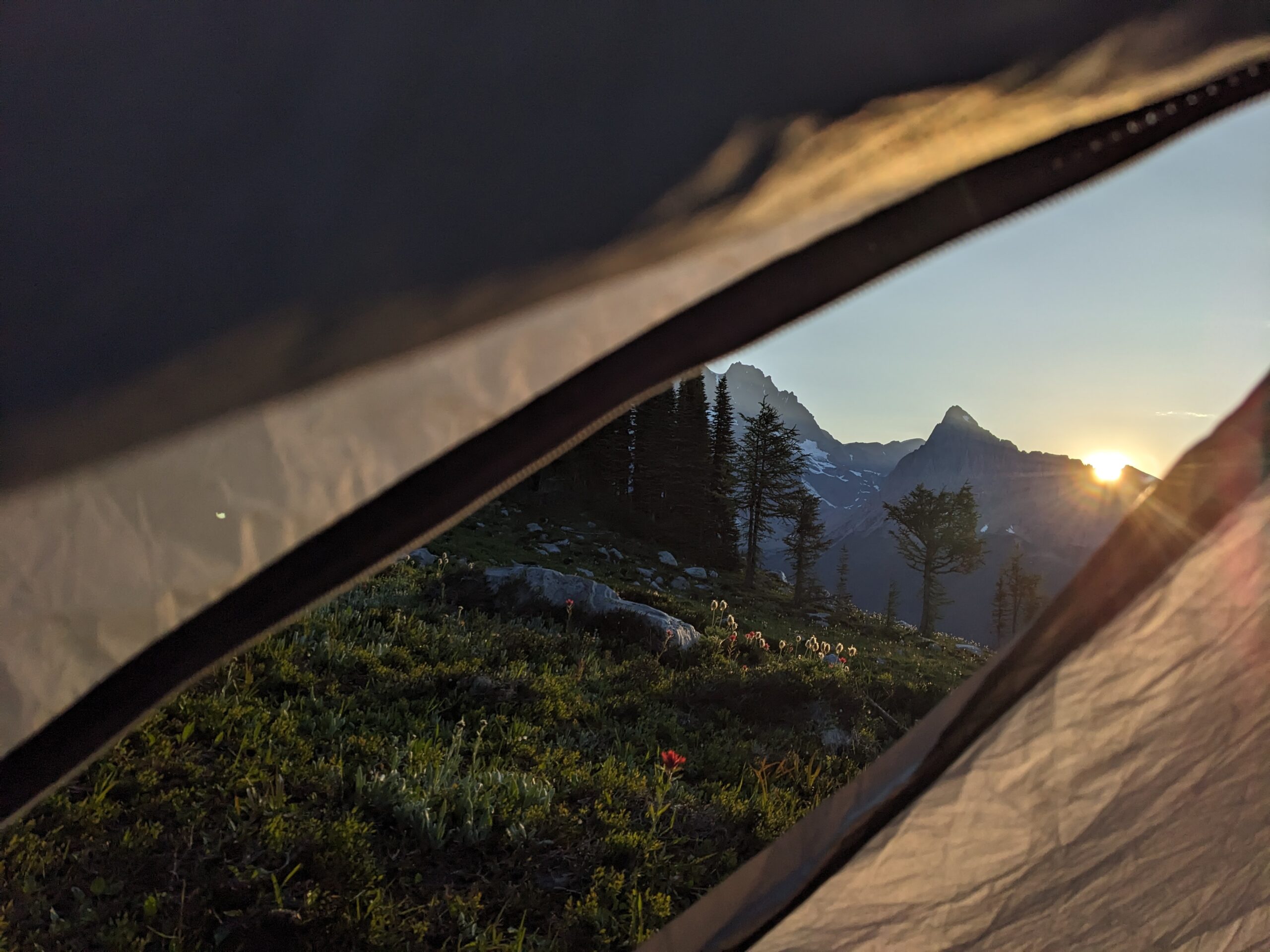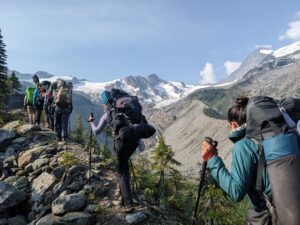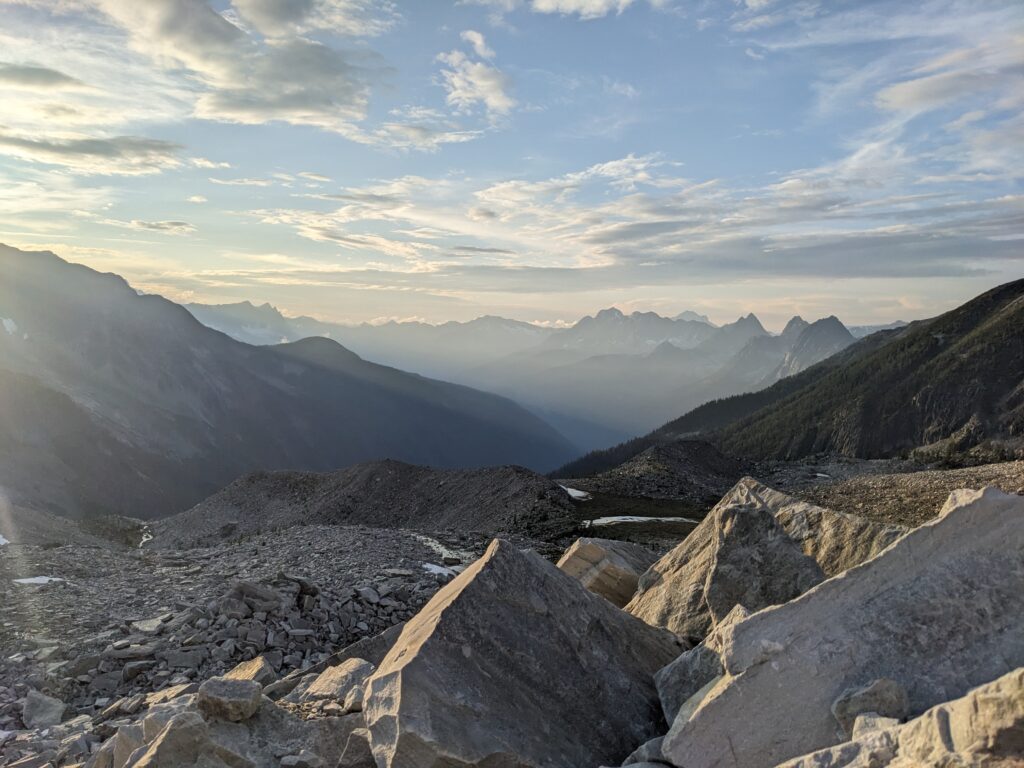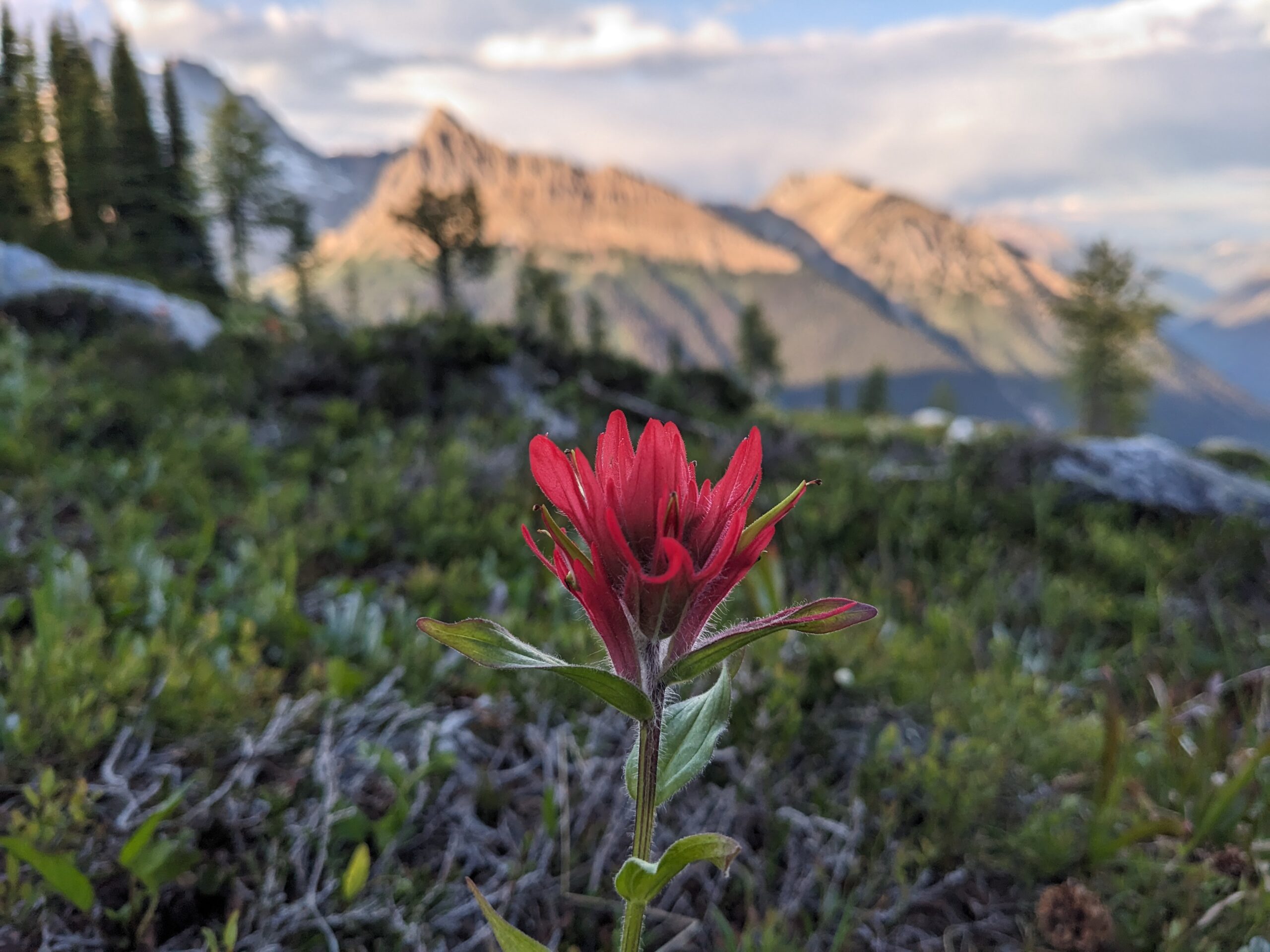
Imagine you wake up in the early morning. The moon is still out with a bit of morning dew covering everything around you and the sun slowly starts to creep in. You boil water for your morning coffee. As the minutes pass, the mountains glow, reflecting the rising sun and all you can feel is bliss as the light hits you. This was another peaceful morning for me while on WRFI’s Conservation Across Boundaries course. Throughout the course we have trekked through the Bob Marshall Wilderness in Montana and the Purcell Mountains in British Columbia seeing what the Northern Rockies have to offer.

The course taught us the importance of these fragile ecosystems, the difficulties that conservation groups experience with management, and efforts to help protect and conserve these beautiful areas. On our travels we stopped in an area of British Columbia called Elk Valley which is home to a gigantic open face coal mine. We learned about how this behemoth of an operation is important for the people who live in the area, but with the operation the Teck Elk Valley Mine also hurts alpine lakes across the province. Another area that we hiked and learned about was the Jumbo Glacier area, which had its own challenges that they were facing with foreign investors trying to build a ski resort on a nearby glacier. The Jumbo Glacier area was saved by the Ktunaxa tribe who fought to protect these sacred lands from development and the never-ending approach of civilization.
The issues that we witnessed are ones that are rooted deep in the law on both sides of the border with Canada Section 92 of the Constitution and the US having several different agencies that have control over the materials and harvestable resources on the lands. These lands are seen as sacred or have significant meaning to the Indigenous peoples who still live there. And this issue is a tale as old as time (or at least, as old as when Western law was imposed on North America). But even so, we see people fighting to protect and preserve the lands around us, with citizens from both sides of the border informing our group about different measures and challenges being faced in different sections of the Northern Rockies. So, there is still hope. It’s great to see different organizations and everyday people working together to protect these lands from damage or even outright destruction.

As I hike through these mountains embracing the wildlife and flowers, I can’t help but feel a deep respect for the land and those who are working to keep it together. As a collective group we need to help ensure the protection of our environment because it’s a place people can look to see true wilderness and have these emotional connections with the world. The world is a beautiful place and sometimes we just need to slow down and enjoy what’s around. And on those evenings after a long day of hauling gear and supplies over several mountains, where your legs start to tremble from exhaustion, you feel like calling it quits but you know you can’t and as you reach the top of the mountain you get a sense of overwhelming joy. The cool mountain air brushes against you as you stand on top of these natural towers and all you can see is forest sprawling out in every direction. This is what it means to truly be in the wild.
